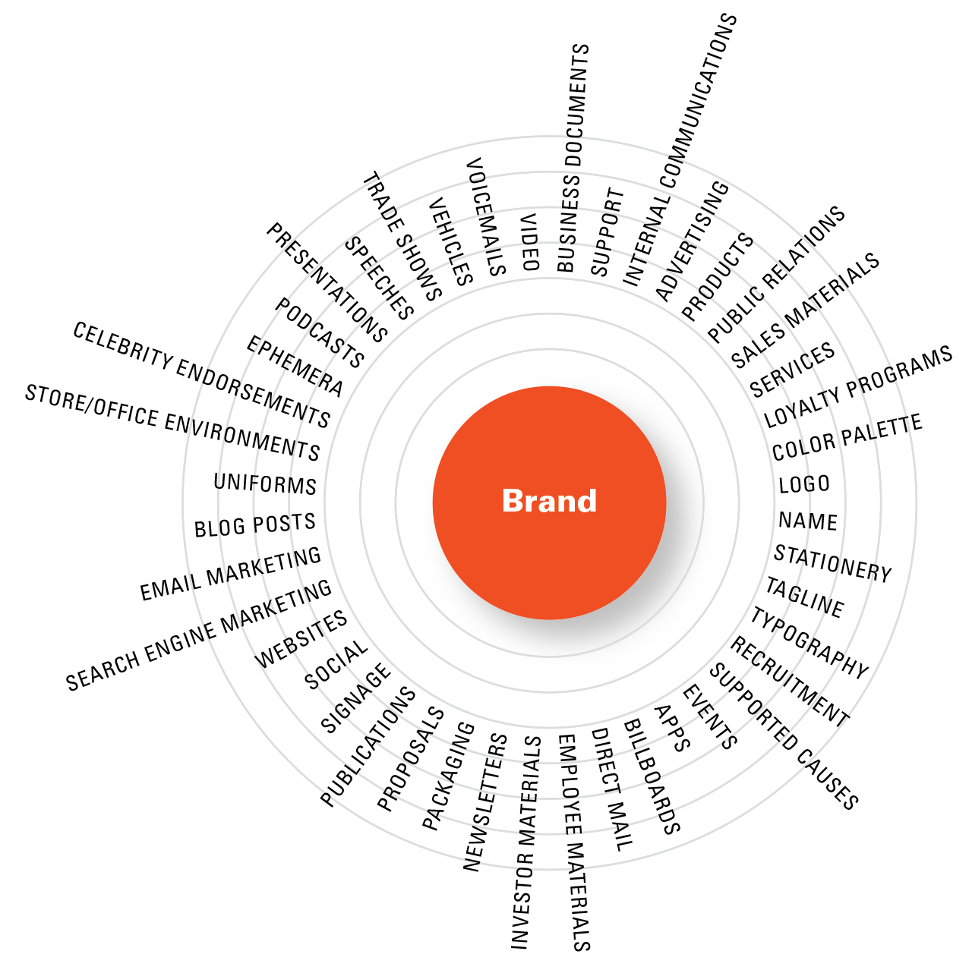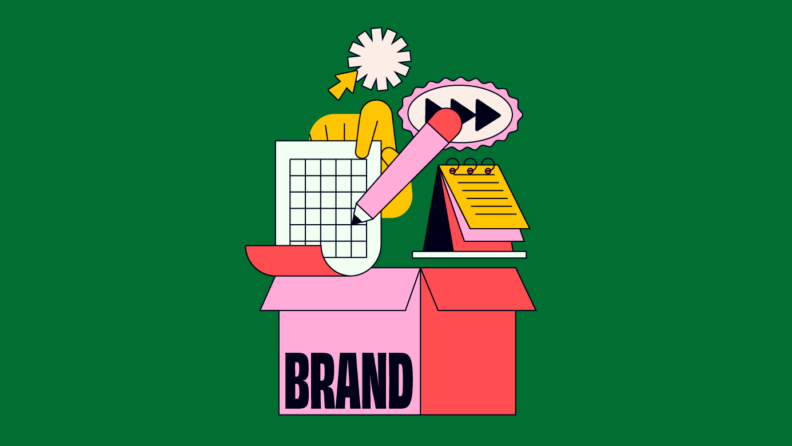By most estimates, we encounter thousands of brands every day.
No matter where you are right now, chances are you can look up from this article and start counting brand names and logos—on your screen, on the shelves in your house, or on your own clothing—and get into the dozens in no time.
With so much brand “noise” out there, how can any new brand hope to create an identity that cuts through?
As a brand consultant, I pay more attention to brands than most, and I know the answer lies in a strong, distinctive brand identity—and the process used to create one.
As co-author of the latest edition of Designing Brand Identity, I recently helped document this process, partnering with the late Alina Wheeler to update her best-selling guide to the world of brands and branding strategy. The book, now in its sixth edition, includes a universal, five-step branding process.
Whether you’re a startup founder or a marketing leader, you’ll need these brand fundamentals to create a remarkable brand identity.
Why Worry About Your Brand Fundamentals?
Study after study shows that investing in a strong brand can have measurable, positive impacts on business performance, from price premiums to employee recruitment to shareholder returns.
Decisions made during the brand management process outlined below can influence the perceived value of a company (or product).
And in the words of Sarah Robb, founder of Brand Strategy Academy, “The greater the perceived value, the greater the potential revenue.”
Five Brand Fundamentals Marketing Leaders at Startups Need to Remember
The brand fundamentals below form a five-step process that can be used in any industry for organizations of any size, at any stage of growth.
The time and resources required to complete the process may scale up or down, but the steps remain the same.

Brand Fundamental #1: Do Your Research
Root your brand’s strategy and identity in facts, not opinions.
Review materials. Ask colleagues and potential customers questions about how they see your product. Check out competitors’ websites, stores, or products.
Document the imagery and words used—and overused—by companies in your category.
Brand Fundamental #2: Set a Clear Strategy
Based on what you’ve learned by conducting research, write down answers to a few basic questions:
- Who needs to know about your brand (i.e., Who are your customers)?
- What are a handful of ideas that you want your brand to stand for in the minds of those people?
- And lastly, how will you get there?
You don’t have to have detailed answers at this point. But paint a picture—in broad brush strokes—of how you plan to make your audience think and feel about your brand.
Brand Fundamental #3: Design an Identity System
Brands are more than logos.
Take a look at a list of the best branding books, and you’ll see they’re about more than logo design—they include positioning, storytelling (messaging), naming, and more.
Think of brand identity almost like a person’s identity. If a logo is like a face, consider all the other characteristics that makeup someone’s identity—their ideas, personality, style, and more.
Similarly, a brand identity can include other visual elements, like colors and typography, as well as non-visual elements, like words or sounds. (Just think of the Netflix “sonic logo” or the sound of a Coke bottle opening.)
Brand Fundamental #4: Create Touchpoints
Touchpoints are places where your brand “touches” your intended audience - from websites and apps to packaging and retail spaces.
Extend the identity into every relevant touchpoint, creating a seamless, coherent brand experience. As your brand identity is refined, you’ll need to strike the right balance between flexibility of expression and consistency in communications.

Brand Fundamental #5: Watch Your Assets
Building strong brand equity takes time.
Over the years, many people may have been responsible for representing the brand and creating brand applications. So, producing training and guidelines documents is critical.
When planning a significant change (e.g., a rebrand), remember to consider the order in which audiences are notified—employees should know what’s changing before customers find out. As we outlined in Designing Brand Identity, “Military mobilization skills come in handy, and boundless optimism helps.”
When in Doubt, Trust the Process
The late Alina Wheeler, who wrote the first edition of Designing Brand Identity over 20 years ago, had a mantra: Trust the process.
Whether you’re branding your startup, rebranding your small business, or working as a brand manager inside an established organization, the process is the same.
Strategy is based on research findings, and strategic thinking must inform design. Every touchpoint reflects a core brand identity, and all these brand assets must be refined, managed, and protected over time. Trust the process, get these brand fundamentals right, and you’ll be on your way to a brand people remember.



